Flying drones in the USA (or for that matter any country) requires following many rules. You need certifications and permits to be able to fly a drone commercially. The hassles of passing tests, applying for registration and permits sometimes add up to more than the actual joy of flying, a reason why many look for drone alternatives. This is especially true for those who are just looking for a fun way to capture things from a different perspective.
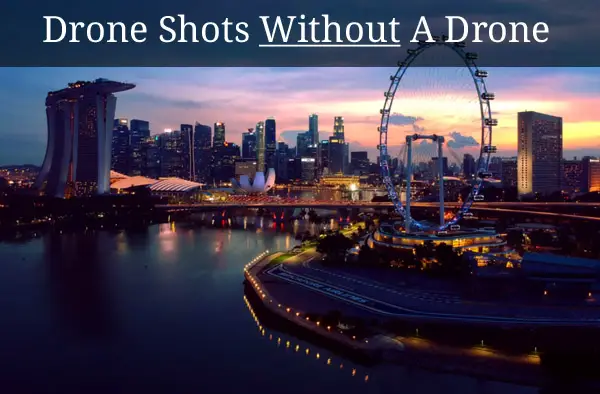
In this article, I will describe all the alternatives available to you if you want to take drone- like shots without using a drone.
To get drone shots without a drone you can utilize techniques such as extension poles, balloons, gimbals, natural formations, tall buildings, planes and helicopters, vehicles and others described below.
There are many different drone alternatives available in the market. You might already be familiar with a few of them. Some might be completely new technology for you. Either way, these technologies (and in some cases DIY solutions) ensure that you get a perspective that is similar to shooting with a drone but without the associated hassles.
Why You Need to Fake Drone Shots
There are many reasons for people wanting to shoot with drone alternatives or use fake-drone shots. We have already briefly mentioned a few of the reasons at the beginning of this discussion. Let’s elaborate on them and the other major reasons.
Permit Is Compulsory for Commercial Drone Flying
The first and foremost reason is that there are no drones that can be flown for commercial reasons without registration and permit. Even if you fly the lightest of drones, i.e., those under 250 grams (8.8 ounces), which are normally exempt from registration that applies to recreational purposes only. For commercial flying, however, you will require a Part 107 certificate to fly such a drone.
Public Safety and The Operations Over People Rule
The Operations Over People rule came into effect on April 21, 2021, and it governs many of the rules that a certified drone pilot must adhere to fly a drone for commercial purposes.
Even for recreational flying, you must conform to an array of regular flight rules and regulations. These rules are there for the safety of the public and public property. You cannot fly your drone at a height of more than 400 feet. In other words, you are not permitted to fly anywhere beyond Class G airspace.
Regarding speed, you cannot fly a drone at a speed exceeding 100 mph.
Additionally, you cannot fly a drone beyond visual range, and you have to ensure that you are not flying a drone directly in the path of any aircraft. You must understand the basic rules of giving way to an oncoming manned aircraft and maintain that at all times during the flight.
Additionally, no drones should be more than 55 pounds in weight at the time of take-off, commercial or otherwise. That includes the weight of any camera system onboard, plus batteries, and any other accessories.
Additionally, it is forbidden to fly a drone while controlling it from within a moving vehicle. There is an exception though and that is when you are flying in a sparsely populated area.
No-Fly Zones
You cannot fly over government buildings, military or police establishments, or any other places which are covered under the no-fly zone. For a detailed list of no-fly zones in the area that you wish to operate a drone, you can download and install the B4UFLY app. This app will guide you in case there are any no-fly zones in the area.
Breaking a no-fly zone or flying a drone in an area where drones are banned will attract a hefty fine or jail term or both.
Photography in other countries
If you are traveling across continents for fun or for business and shooting with a drone, practically every time you pass the border of a state or country you need to obey local drone laws, and these can be complicated, difficult to figure out on short notice or on holidays, and costly if broken (money or even jail time depending on country). The last thing you want to do on your vacation or trip is pay thousands in fines or spend time behind bars.
Also don’t forget the hassles of traveling with drones on airplanes, with laws and packing being different for different countries and airlines.
Budget
Let’s not forget that drones are expensive to own. Additionally, they can be very fragile and don’t survive a strong impact. Therefore insurance is mandatory and you have to think of replacing your investment once in a few years.
As you can imagine, to own, license and operate drones is a very complex and costly thing to do.
Environment
Lets face is, our planet is not always drone friendly. Thirty minute drone batteries last 5 minutes in very cold weather, strong winds blow drones into buildings, and rain as well as snow get into flight assist cameras. High altitude is not flight friendly. There are certain places where the environment is ALWAYS too harsh to fly a drone. The last thing you want to do is lose that $1000 or $4000 device.
Drone Photography Alternatives
Using a Pole
The best and the easiest solution is to stick a camera at the end of a long pole and raise it as high as you can to shoot videos/photos. The effect is similar to flying a drone, as long as the camera has some sort of image stabilization built in to it.
Some poles are more than 75 feet in height. Basically the longer the pole the more drone-like the shot will be. These extension poles are nothing more than cleaning sticks the sort of that people use to clean windows etc. I would recommend that you buy a regular selfie stick or monopod and then attach one to the end of a pole because of its camera attachments.
However, you need the right camera to work with this technique this is because they come with mobile apps that allow you to control the camera from a distance. Plus, GoPro cameras are small and lightweight.
GoPro Hero series cameras are the best for this. At the bare minimum, I recommend that you use at least the GoPro Hero 7 which comes with excellent image stabilization. With the GoPro Hero 9, you get the advanced Horizon Leveling technology that is completely out of this world and can bring a lot of options onto the table when faking drone shots.
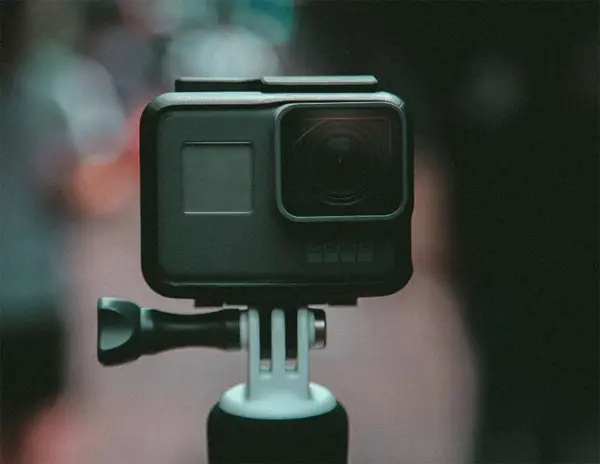
You can spin the camera while it is recording and yet get stable footage where the horizon is perfectly level. These are advanced camera features that are unavailable even in the state-of-the-art modern drone camera systems.
Alternative to GoPro would be a bunch of Chinese-made action cameras like the SJCam SJ7 Star and AKASO. These cameras too come with a smartphone app, but they don’t have the quality of image stabilization found on GoPro and also the image quality is not the same.
Keep in mind when using a pole that unless you rig an extra monitor to view what your dslr camera is seeing (doable with a phone, bluetooth, or external action camera monitor), you will be “blind” and only estimate what your camera sees. Make sure your camera is straight and check your shots often. Pay attention to composition.
When shooting stills, keep in mind that wide angle lenses will be easier than telephoto. They will give you more room for composition error and allow cropping (provided your camera has plenty of megapixels) and they will be easier to keep smooth in the case of shooting footage.
Shooting From the Top Of High Buildings or Natural Formations
One of the easier drone alternatives is to shoot from a high building or a natural formation like a cliff or something that gives you a clear view of the scene you wish to capture. Please note any building will not work. You will need to have a clear view so that you can mimic a shot by a drone.
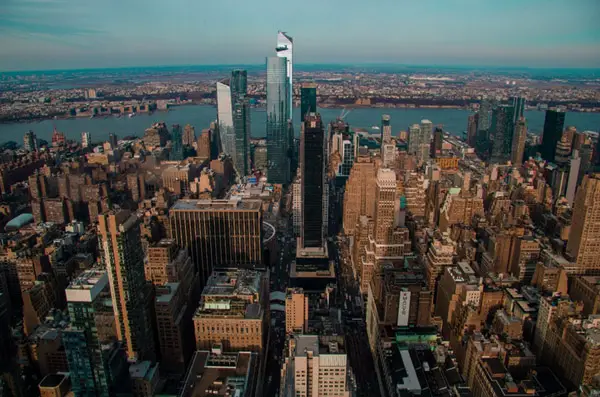
[Shot from the top the Rock, Rockefeller Plaza, New York, NY, USA]
If you are standing on the roof or a building or a high ledge (while being safe) that gives you the best-unobstructed view. But it is highly risky. You need special permissions from the building management, and you need safety equipment to attempt such a shot from a ledge.
Many people take photos from the top of high buildings, hotel windows, and observation decks. But if you take an image from the observation deck of the Burj Khalifa your images will be similar to thousands of other tourists that have already been there and have already taken that same image.
You need to do something different.
Parking garages are one such example. Parking garages that are high up and have open roofs are easy to shoot from and can be easy to mimic the same effect as a drone.
In the same way, you can look for restaurants, especially the rooftop restaurants which offer an unobstructed view of the area.
One way to find a vantage point would be using Google maps and or Yelp. You can look for tall buildings using Google Earth and or Google Street view in 3D that will give you the most accurate vantage position for the kind of shot you are looking to capture.
You can even use your lens zoom to imitate drone motion for videos, especially if you have motorized lenses. On the other hand, a closeup of an object from above or an object known to be high above the ground can be accomplished with a powerful telephoto lens used from a building or natural land formation.
Commercial Products
One of the top commercial products that I would recommend is a gimbal stabilizer for your camera. There are many different makes and types available on the market.
Make sure that the gimbal is lightweight, balances your camera perfectly, and has a screw thread at the bottom which allows you to screw the gimbal on the top of your pole.
Speaking of poles, you can also use a light stand. Light stands are cheap, and they come in all kinds of heights and makes. But the best thing about light stands is that they come with a thread mount that accepts cameras, lights, and this gimbal stabilizer. So, all you have to do is buy a compatible gimbal stabilizer and a light stand, and you are done.
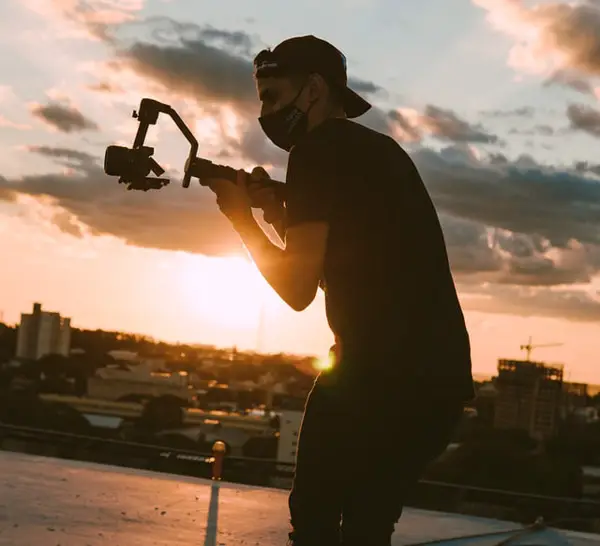
You can then use the pole and vary the amount you extend it, move it, flip it, etc. The gimbal will make it look like you are shooting with a flying drone. In still photography it even simpler than shooting footage- you will be able to modify your set ups/ extension lengths and not have to worry about transitions.
A gimbal with a camera can also be used to imitate low flying drone shots by simply handholding the gimbal and walking or running with it.
Both with or without gimbals and when using lighting stands or poles, make sure that your shadow is not caught in the frame. Watch out for the bottom part of the frame to make sure that your or the shadow of the pole is not creeping in.
This is important, especially when shooting at dawn or dusk when the shadows are the longest. If possible, try to shoot against the light rather than with the light. Or at least that the subject is side-lit. That way your or the shadow of the pole will not pop up in the image.
You can move in any direction, forward and backward, left and right for those dolly shots. Don’t forget for motion shots that the farther you are from your object of interest, the slower the motion will appear.
Drone Shots from Chartered Flights and other vehicles
Getting on a chartered flight isn’t the most economical alternative. But in some situations, they are the only solution that you can use. In some countries getting on a high rooftop is difficult because there aren’t any! Or the regulations for climbing on top of a roof can be pretty harsh which means you don’t want to commit to such an adventure.
The alternative is to use a chartered helicopter ride or even a microlight aircraft that can take you up and give you anything between 30 mins to an hour to shoot. Countries like Nepal, Australia, Kenya, etc. have wonderful, chartered flight services that take you up and cover the most scenic locations for photography.
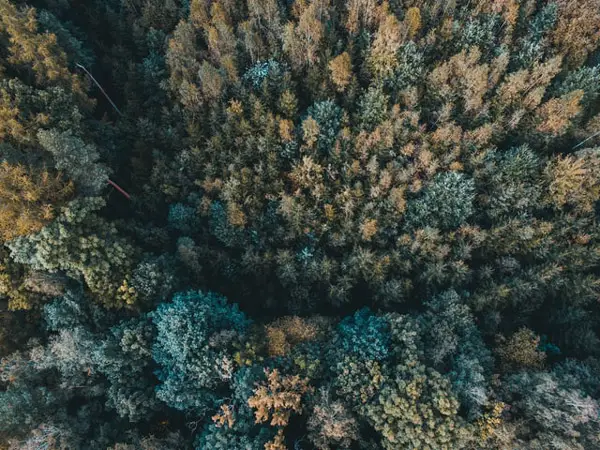
Most countries have helicopter city tours. But the problem is it can get a bit crowded. Getting on the front seat is the best option simply because it gets you the most advantageous position to shoot images. Whatever you do make sure that you are not sitting over the wing. The alternatives option would be to sit towards the back of the plane.
No matter where you are seated make sure that you have your photography gear ready to shoot as soon as the plane starts rolling on the tarmac. The best times to shoot aerial photos while seated on an aircraft are the times of take-off and landing.
When you are mid-air and cruising any shots taken from that altitude do not mimic the same effect as a drone shot. A normal commercial drone is not permitted to fly above the height of 400 feet. So any drone shot taken above is either a violation of flight rules or is a fake shot.
Helicopter flights are a lot easier to shoot from because they have slower cruising speeds plus they cruise at a much lower altitude than chartered planes. Additionally, helicopters can take you closer to a location than a normal plane.
In some countries, you also get hot air balloon flights. These are wonderful options as well. They are slow but they are less jerky compared to single-engine small aircraft. Therefore, these allow you to photograph much better.
You can even experiment with your own portable hot air balloons on a string, as long as you are using a lightweight camera.
Vehicles such as cars, trains or bikes with extensions or just camera mounts and gimbals will allow drone- like shots.
Lighter Drones Under Commercial Use Limit
These days lighter drones have been introduced into the market. The whole objective of these drones is to woo recreational flyers who are needlessly burdened with rules and restrictions. These people fly drones for the kick and have nothing to do with commercial applications. So, they want to avoid the hassles of permission and licenses that larger drones are plagued with.
Smaller drones like this have some advantages. Restrictions and rules are eased out a bit for such drones, though you are still bound by the general rules of flying drones.
Drones under the commercial weight limit, which is less than 250 grams are not required to be registered to be flown in the USA. This would include drones like the DJI Mavic Mini and the DJI Mavic Mini 2. You can fly these drones for recreational purposes without getting them registered.
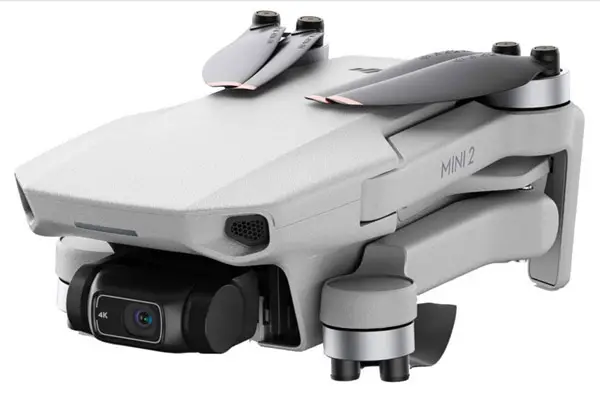
That said, you will have to follow the basic rules of aviation that we have detailed above. Plus, if you ever want to use these drones (less than 250 grams) for commercial purposes, you will have to get them registered. Plus, you will need to get a Part 107 certificate to fly these for recreational purposes.
You could use one of these drones but there are some serious drawbacks of using them. First, these drones are not weather sealed. A torrential downpour or bad weather can crash them and render them useless. As these drones are very light windy conditions are also unsuitable for them to be flown.
The control range of these drones is also much less.
Plus, the onboard battery has less juice for very small drones (except DJI). Maximum flight time ranges from 10 to 15 mins which seriously puts a question mark over their commercial usage. Even if you just want to have fun flying them you will not change batteries after a few mins of flight time and even then the actual time flying is less as it still has to come down in time for the battery to be replaced.
DIY Setups
You don’t need an action camera to shoot fake drone shots. You can even use your trusty smartphone and get the kind of shots that you want. A smartphone attached to the end of a pole or a light stand via a smartphone holder is the best option because it allows you to use a simple DIY rig for faking drone shots.
Just make sure you are faking drone shots safely. Watch where you are walking or running and dont go over any edges of terrain or holes. You are not a drone. Try to move as steadily as you can, gimbals can get rid of a lot of issues but not all.
Below is a good video on setups:
What should you do?
You don’t always need a drone to get a drone perspective. But there are limitations to what the drone alternatives can do. You will feel that as you keep shooting. It all depends on your particular needs. In those circumstances, a proper drone is the best option and you have to go through the hassles to get a drone registered and a pilot license before you can shoot. If you are interested to find out more about drone flying and tips on how to shoot videos or images with drones check this out.
Good luck with your fake drone shots!









2 comments